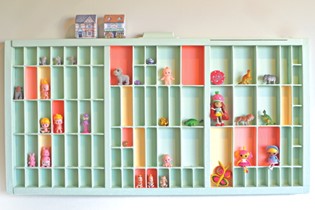Tips for helping your child manage their emotions

Emotions happen whether in response to the day-to-day (“It’s disappointing that we can’t go to the playground because of the rain”) or the once-in-a-lifetime (the death of a grandparent). Sooner or later children will learn that the world can be a big, confusing place. Our job as parents is to teach our children that it’s okay to feel, even when we find ourselves on the less comfortable end of the emotional spectrum. Anger and frustration are just as valid and real as happiness and gratitude. Yes, they can be messy and challenging, which is why we need to equip our children with strategies to handle them.
Understanding the science behind emotion offers an insight and appreciation for the “why” of those moments that challenge our parenting skills set. The fact is, children are not born with the developmental equipment to dial back their emotions. As Nathan Mikaere-Wallis, who works with the Brainwave Trust, explains: “Our ability to regulate emotion lies in our rational, cortical brain. These higher systems rest on the lower regions of the brain. We learn to feel before we learn to control what we’re feeling.”
With incomplete higher brains, the lower brain (think emotional systems and primitive impulses) is in the driving seat. This can easily overwhelm children, which can look like kids misbehaving. For parents this can be embarrassing, awkward or downright off-putting. When outbursts happen publicly it can be hard to disengage from the feeling of being judged and find compassion for those incomplete brains.
CUDDLES FOR COMFORT
From our earliest days the regions of our brain associated with fear, anger and sadness are online. Young children are not able to get these systems back into balance on their own. They need the calming, soothing and physical comfort of their familiar adults. Crying from babies and tantrums in toddlers are usually cries for comfort, not willfulness or naughtiness.
Repeated experience with this pattern of Distress (“I’m freaked out!”) followed by Calm (“I feel better when Mum cuddles me”) gradually empowers a child to be able to manage this process. She learns to cuddle herself, at least on the inside.
I find the analogy of storm clouds really useful when thinking about big emotions – both my own and my children’s. Holding an angry toddler or cradling my anxious big kid can feel much more manageable when I remind myself of the very temporary nature of that soothing. I imagine that my cuddling, rocking and shushing is a bit like holding an umbrella for them while the cloud dumps out its freezing, cleansing rain. There may be more rain in the future, but this storm will soon pass. Wind will push it along and sunshine always returns.
SOOTHE NOT SOLVE
While we are on the subject of comfort, consider what Michelle Forrester and Kay Albrecht say in their new book Social Emotional Tools for Life: “When children are upset, it’s natural to want to comfort them by making their big feelings go away. Emotions don’t need fixing.”
Soothing and providing comfort are not the same things as changing our kids’ emotions. This is a really important distinction. We can’t make the hurt go away. We can’t fix it, try as we might.
Instead we can sit alongside our children (holding their umbrellas) while they work through whatever it is they’re feeling.
I find it useful to say aloud “I’m going to be here to hold you while you cry”. It usually doesn’t take long, less time than if I try to bully them out of it and deal with the escalation.
We cannot magically change the way someone else feels – not our partners, our best mates, and not our children. If your friend called you sobbing because her cat died, would you offer her a shoulder to cry on or would you tell her to harden up and knock it off? If she’s mad because her co-worker is inconsiderate and annoying, do you give her a moment to vent before moving into advice-giving mode?
Most people I have asked would make time to sit alongside a friend in this situation. This would be true whether you liked the cat, are annoyed by the co-worker, or not. We can empathise with a feeling even if we are don’t share it at that given moment. That said, a child deserves our comfort even if the situation they’re processing seems silly to us.
Perhaps your child is angry because she really wanted the bunny egg cup and her brother got it. Instead of thinking (and expressing) “For goodness sake, it’s just an egg cup!” try, “I know! I find it hard when things don’t go my way too.” It disarms a situation.
WHAT'S IT ALL ABOUT?
Remember that all behaviour has meaning. Yelling, kicking, grizzling – what do they mean? If you’re feeling calm enough, actually do this: Pause and ask, “What is the meaning of that behaviour?”
Often a child’s difficult behaviour is about craving our attention which is as precious to them as sleep, fresh water and diamonds are to us. So try to ensure you’re finding moments to catch them when they’re good and pay heed to what’s known in the therapeutic world as HALT. This acronym points to being Hungry, Angry, Lonely and Tired as barriers to healing. Addressing the need for food, companionship, connection or rest can go a long way. Often I can’t deal with anyone until I’ve downed cheese and crackers.
I have gathered together some more tasty gems from experts in psychiatry, paediatrics, education and child mental health which will help you to support your family. This is crucial work because nourishing a child’s emotional wellbeing is arguably as important as filling their tummies with good food.
STRAGTEGIES TO HELP CHILDREN DEAL WITH BIG EMOTIONS:
• Discuss what you observe in the media and in the behaviour of other children. A starting point might be as simple as “Woah, Madison and her mum got really cross with each other!” Let this lead to a conversation about how various people express anger, what they do to feel better, and which behaviours are okay.
• Talk about your tools for feeling better. Make a safe retreat space. A beanbag with a cosy blanket or a smooth stone tucked into a pocket as a cue to breathe deep can be a big help. Some people do well to draw, write or paint their feelings out. For others, a run around outside or a punch-safe pillow can also be useful tools. Keep trying until you find something that works for your child.
• Use children’s desire for play to your advantage. You can use teddies, dolls or puppets to act out scenarios. They may demonstrate appropriate responses to trying circumstances. I know it sounds hokey and it can feel a bit odd at first, but it can be profound. Use silly voices and go for it.
• After an interaction gone awry, sometimes it helps to re-enact the scene. I like: “We were just so angry with each other. I bet we can do better. Let’s try again,” and we walk through a scenario again.
• Teach children about the storm cloud analogy. Highlight it in others: “Looks like Dad’s under an angry cloud today.”
• Practise healthy language, which can be truly beneficial when you (or your child!) are in the middle of a heated moment. I know I’m a much more understanding mother when I hear “I need space!” yelled at me, but not so much “Go away!”.
• Maybe you or your child will respond well to using creative language to describe emotion: “I’m feeling spiky!” or “I just need this red mood to fade away.” If you had to describe an angry body in terms of texture, colour or sound, what would you say? What about sadness? Frustration?
• Try using one of the many awesome picture books about emotion. There is a very comprehensive list for download here: csefel.vanderbilt.edu/documents/booklist.pdf.
GET A HANDLE ON YOUR OWN EMOTIONS
I sometimes think of my family like a game of pick-up-sticks. As one person’s emotional state moves, another’s is influenced. So the best tool we have for supporting our children with their emotions is to be aware of our own. As Dr Daniel Siegel writes in Parenting from the Inside Out: “When we express our emotions, our children learn what is important to us as well as witness a model for the healthy expression of emotion”.
We do well to talk, journal or jog (whatever works!) our way through this acceptance. Just think “I find it difficult to deal with my daughter when she’s sad.” Or “I can’t yet handle my son’s anger.” Yet.
It can take years and a lot of effort to get to a place where we deal with our emotions in a healthy way. If we are honest, how many of us thirty- or forty-somethings have an absolute handle on our own emotions? And here we are requesting that our children, even toddlers, get it together? It’s a big ask.
I lost my own dear mother whilst parenting an emotionally astute eight-year old and a sweet, vulnerable babe-in-arms. Grief: pure and messy. As a Cantabrian, almost everyone I know has been parenting through change, loss and fear as earthquakes have battered us. Children in war-torn countries lose multiple family members in one go.
But take heart that children are biologically set up to recover from life’s shocks, just as long as they have someone who is crazy about them, acting as a cocoon of sorts. If nobody sees that as their primary job, or if that person is incapable of fulfilling that function, children are vulnerable to the long-term effects of that stress. In that case, call for back up – aunties or grandads – to wrap around the kids.
Pay attention to the amount of energy spent trying to skirt around feeling this stuff. It can be tempting to turn to distraction, be it wine, ice cream, Facebook, whatever, as a temporary denial of our feelings instead of donning our gumboots and wading through. And with children watching and learning by our every move, some brutal honesty can be necessary mama medicine. Feel it, label it, let it go.
Miriam McCaleb is an ex-university lecturer who blogs at baby.geek.nz. She is a mother of two and her gumboots are her favourite piece of footwear.

AS FEATURED IN ISSUE 27 OF OHbaby! MAGAZINE. CHECK OUT OTHER ARTICLES IN THIS ISSUE BELOW

















